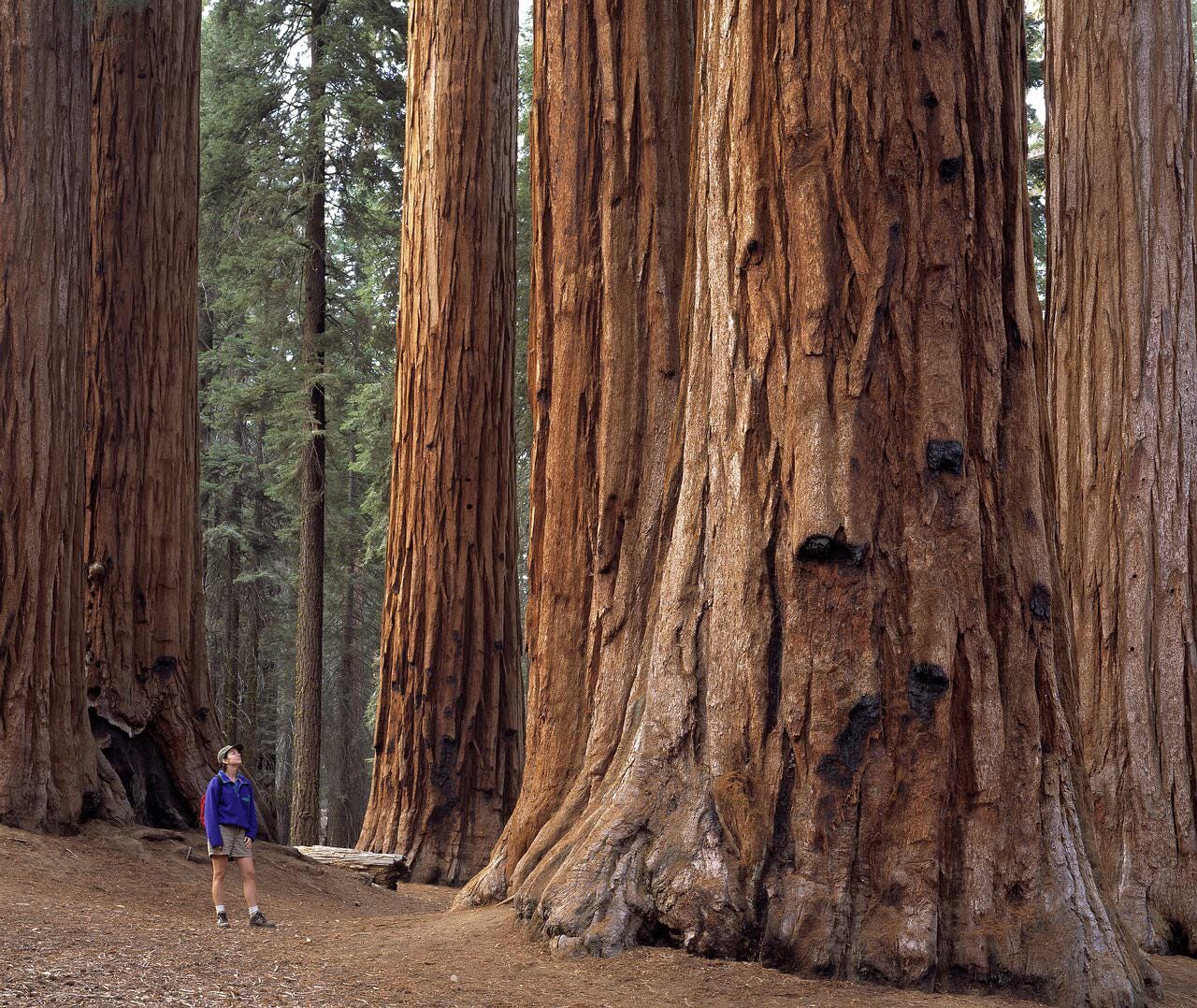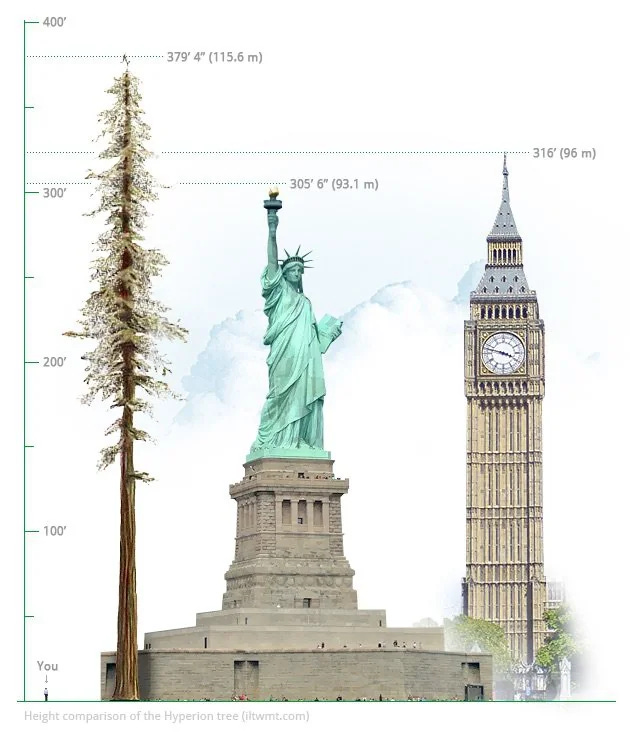The Great American Travel Guide
Where to go in the United States among places that are less likely to be featured in your guidebook.
Thank you for reading The Garden of Forking Paths. Some of this edition is for paid subscribers only. If you’re interested in supporting my work—and getting access to dozens more articles—please consider upgrading to a paid subscription for just $4/month, or you can support my work by buying my new book, FLUKE: Chance, Chaos, and Why Everything We Do Matters. And feel free to comment below on what you think I missed in this edition!
In a recent edition, I wrote about One Day in Kentucky, and told you what truly makes America great. In that vein, I’ve now put together a Great American Travel Guide.
I’ve been to 46 of the 50 states (apologies to Alabama, Alaska, Oklahoma, and Mississippi) and I’ve driven through most of them on several long, meandering road trips since my teenage years, racking up thousands of miles on endless stretches of wide-open highway, taking in extraordinary sights and a diverse array of national parks along the way.
It’s a huge country, filled with unexpected delights. My goal here is to suggest ideas that aren’t at the top of most lists or guidebooks. Yes, the Grand Canyon, Yellowstone, Yosemite, the Pacific Coast Highway, and Florida’s beaches are amazing. Go see them. They’re unbelievable. You probably already know that.
This guide will be for the stuff that doesn’t immediately come to mind, and how I would curate your travels if I was trying to show off some hidden American gems.
The Road Trip
If you have the time, don’t fly somewhere and just see a city. Get a rental car. Drive thousands of miles. If you stay in motels or camp, it can be really affordable, too.
One of the most extraordinary things about America is its vast emptiness, completely alien to Europeans. In Britain, virtually everyone lives within a one hour drive drive of a reasonably large town. Not so in the United States, where, in the remote parts of the American West, you can drive for hours without seeing another human. (Country music makes more sense when you realize that songs about “getting drinks in the club” don’t resonate so much when the nearest nightclub is 800 miles away).
A fair warning: a proper American road trip will be a lot of driving. But the driving is part of the experience. Cruising through Monument Valley doesn’t feel like a long drive to get to a destination. The drive is the destination. I mean…look at this road:
So, get yourself a trucker hat, guzzle down gas station coffee, and stay off the interstates as much as you can. The state highways take much longer, but they’re full of charming small towns and unexpected detours (the interstates are mostly sidelined by McDonalds and Subways).
Here are my top ten travel recommendations for your All-American trip, in no particular order:
1. Canyonlands National Park and Rural Utah
This is the unfairly forgotten cousin of the Grand Canyon, simply because it’s so remote. Salt Lake City is 250 miles away. Albuquerque 350 miles. Denver 400 miles. Canyonlands is in the middle of nowhere. As a testament to the vast emptiness of America, Canyonlands only became a national park in the 1960s after an American government official flew over it and decided to look into the area. Moab, Utah—population 5,366—is the nearest plausible base, and even then, the drive to the spectacular “Needles” area of the park takes about two hours.
But it’s worth the effort. This is what the park looks like:
The hiking in Canyonlands is spectacular, too. There are long, well-maintained trails, and you get views like this (I took this photo in 2019 during a hike in the park, but photos simply can’t capture the scale of these canyons and soaring, rust-red rocks).
You may have heard of the more famous national park closer to Moab: Arches. Don’t get me wrong; Arches is extraordinary and the gravity-defying arcs of rock are breathtaking. But Arches during busy periods can feel like you’re part of an unbroken snake of cars, slithering slowly to see the best arches that everyone visits. Canyonlands, by comparison, is vast, empty, wild, and rugged.
If you’ve got a shorter time for a road trip and want to be awed by the geology of the American West, rural Utah is a good pick for a less ambitious road trip. There’s a ton of amazing natural beauty crammed into the state and, along with Colorado, Utah features (in my view) the most spectacular geological majesty of the lower 48 states. Beyond Canyonlands and Arches, there’s Bryce Canyon, Zion National Park, and Dead Horse Point, to name just a few of Utah’s many wonders.
2. See the Redwoods
Of any object I’ve ever photographed, redwood trees have perhaps the largest gap between the experience of being next to them—and the visual image that is produced by cameras. You simply can’t do it justice. Four hours north of San Francisco, the Avenue of the Giants through Humboldt Redwoods State Park is one of the more astonishing places to visit in the United States. There are a bunch of trees that are so wide that you can drive through them.
This is the best photo I’ve seen for capturing the scale, but still, it doesn’t do it justice.
You can also visit Redwood National Park. This area of the US is home to the tallest tree on the planet, Hyperion, which isn’t accessible to visitors. Its location is nominally kept secret to avoid harm. This graphic, from a Reddit user, gives a sense of the scale.
(If you’re into big trees, you can also pop down to the General Sherman Tree, the largest single stem tree in the world by wood volume). It’s a mere 9 hours drive away from the redwoods, still in California. I wasn’t kidding when I said America is vast).
3. Mount Hood and the Columbia River Gorge
Part of the Cascade Volcanic Arc, which includes Mount Saint Helens, Mount Hood is an exceptionally beautiful mountain that has incredible prominence because of the abrupt shift between its peak and the flatter terrain surrounding it. As a result, Mount Hood is visible for up to 100 miles away on a clear day. It is also the only place in North America where you can ski all year, served by a chairlift that doesn’t close even in the summer.
Nearby, the Columbia River Gorge—and several jaw-dropping waterfalls—are open to explore. It’s also an adventure sport capital, as it’s one of the best places to go windsurfing in the world.
4. Chaco Canyon and Mesa Verde National Parks
Chaco Canyon (in an extremely remote part of New Mexico) and Mesa Verde (in an extremely remote part of Colorado) are visited way less frequently than they should be. Both are the ruins of indigenous communities. Chaco Canyon was a thriving hub of the Pueblo from around AD 900 to 1150. They produced the largest buildings built in North America, a record that was only broken in the 19th century.
Not only is the site a stunning illustration of rich Pueblo culture, but it’s also a window into “archaeoastronomy,” as buildings are built and aligned according to lunar and solar cycles. It’s an unbelievable place, but only 40,000 people visit per year.
Mesa Verde, by contrast, is an area of Colorado that has been continually inhabited since around 7,500 BC. Perhaps its most famous feature is the Cliff Palace, the largest surviving cliff dwelling in North America. Its construction dates to around 1190 to 1260 AD. The two sites are about 135 miles apart, a two and a half hour drive.
5. Go to a Demolition Derby or Monster Truck Rally
If you want a quintessentially American experience, few events offer a better glimpse into Americana than demolition derbies and monster truck rallies. The rules of a demolition derby are wonderfully simple: drivers in a bunch of crappy cars deliberately smash into each other, until only one car can move. That is the winner.
These events are best enjoyed with Budweiser, or some equivalent, ideally with cheese curds or another disgusting delicacy of American deep fried food lore. Now, you may think that you have to be into cars to enjoy this event. Not so! I do not care at all about cars. Cars offer no interest for me other than as a human receptacle to transport me safely. But I still love demolition derbies, because the spectacle, the atmosphere, and the people watching are incredible. There’s nothing like them in most other places on the planet.
If you’ve tasted demolition derbies and want more, might I recommend a monster truck rally? They are absurd. They are always advertised on TV by a man with the deepest, loudest voice you can imagine, speaking as though he’s been possessed by a minor demon (Megalesius, for example) telling you that they are coming to town on SATURDAY NIGHT! And that you can see all your favorite trucks, such as REPTOID and GRAVE DIGGER, or even the GREAT CLIPS™ MOHAWK WARRIOR.
When I first went to a monster truck rally, the announcer said he was sad to inform the crowd that one of YOUR CARS had been selected from a nearby parking garage and would now be destroyed by GRAVE DIGGER. They showed a video clip on the JUMBOTRON of a car being selected for destruction. About a minute later, a car that looked nothing like the one on screen drove into the stadium, to murmurs around me of people saying things like “I’d hate to be that guy!” or “He’s having a bad night!”
Then, one of the cars drove over the car, and smashed it to bits, and it was awesome.
Humans are such extraordinarily strange creatures. American humans at monster truck rallies provide a particularly vivid illustration of that principle. Go to one.
Halfway done; now onto the final five…
Keep reading with a 7-day free trial
Subscribe to The Garden of Forking Paths to keep reading this post and get 7 days of free access to the full post archives.











